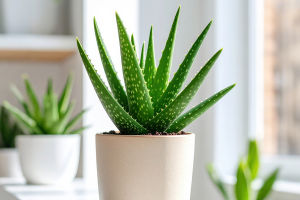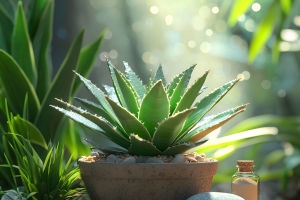Do you dream of sipping coffee surrounded by flowers, even if you live in an apartment with limited space? A balcony garden can turn even the smallest outdoor area into a personal retreat.
You don't need a yard to enjoy colorful blooms, seasonal scents, and greenery that lifts your mood every day.
With smart planning and the right plant selection, your balcony can thrive through all four seasons — and become a little piece of paradise right outside your door.
Evaluate Your Balcony Conditions
Before planting anything, take time to observe your balcony's natural conditions. How many hours of sunlight does it get per day? Is it sheltered from rain and wind or fully exposed? Here's a basic guide:
• South-facing: Best for sun-loving plants and flowers like lavender, geraniums, or petunias.
• North-facing: Ideal for shade-tolerant plants like ferns, begonias, or impatiens.
• East-facing: Morning sun and afternoon shade — perfect for herbs and moderate sun-lovers.
• West-facing: Hot afternoon sun — choose drought-tolerant species like marigolds or lantanas.
Understanding your light exposure and wind levels helps you select flowers that will actually flourish, not just survive.
Smart Use of Vertical and Horizontal Space
Space is precious on a balcony, so think vertically. Use:
• Hanging baskets for trailing plants like ivy or nasturtiums.
• Wall-mounted shelves for small pots and seasonal flowers.
• Ladder-style plant stands to create height and visual interest.
• Railing planters to maximize ledge space.
Avoid cluttering the floor with too many large pots. Instead, mix different levels to create a layered garden effect. This also allows more air and sunlight to reach your plants evenly.
Year-Round Blooming Strategy
A key to a balcony garden that looks lovely year-round is staggered planting. Select a mix of species that bloom in different seasons. Here's a suggested seasonal planting guide:
• Spring: Tulips, pansies, hyacinths
• Summer: Petunias, zinnias, marigolds, lavender
• Autumn: Chrysanthemums, asters, ornamental kale
• Winter: Cyclamens, winter jasmine, hardy evergreen herbs like rosemary
Rotating plants based on seasons keeps your balcony alive with color and fragrance. Using movable pots makes seasonal swaps easier and helps protect sensitive plants during extreme weather.
Choosing Compact and Fragrant Plants
For a fragrant, flower-filled space, choose compact flowering plants that thrive in containers. Consider:
• Lavender: For a calming scent and drought resistance
• Jasmine: Climbing variety adds fragrance and elegance
• Geraniums: Long blooming and colorful
• Sweet Alyssum: Low-growing, great for borders with a light honey scent
• Mint or lemon balm: Adds fragrance and can be used in tea
Just remember, fragrant plants should be placed where the breeze can carry their scent into your home.
Simple DIY Features for Comfort
A cozy balcony garden isn't only about plants — it's also about creating a space you love. Add a few comfort touches:
• Outdoor cushions or a folding chair for relaxation
• Solar string lights or lanterns for soft night lighting
• A small folding table for coffee, books, or a candle
• Weather-resistant rugs to define the space
These simple additions make your balcony a functional extension of your living space — like a mini living room outdoors.
Watering and Maintenance Tips
Watering is often the biggest challenge for small balcony gardens. Here's how to make it easier:
• Use self-watering planters to reduce frequency
• Install drip irrigation kits for fuss-free hydration
• Group pots with similar water needs together
• Use lightweight potting mix to avoid soil compaction
Don't forget to deadhead (remove faded flowers), prune trailing stems, and check for pests occasionally. Spending just 10 minutes every few days can keep your garden healthy.
Climate Considerations and Plant Protection
If your balcony is exposed to strong winds or heavy rain, choose sturdy plants like rosemary, succulents, or boxwoods. You can also install a windbreak screen, shade cloth, or use movable planter carts to shield delicate plants.
In colder months, consider wrapping pots with insulating fabric or bringing fragile plants indoors. A small greenhouse shelf unit can also be useful for keeping herbs and winter flowers safe.
Expert Insight: Why Gardening Benefits Your Mind
Studies from institutions like the University of Exeter and the American Psychological Association have confirmed that spending time around plants can reduce stress and improve mental clarity. Even brief exposure to greenery can lower blood pressure and increase feelings of well-being.
According to Dr. Marc Berman, a psychologist at the University of Chicago, interacting with natural environments — even a small garden — can help boost memory and attention by as much as 20%.
So yes, that tiny balcony garden is doing more for you than just looking pretty!
Conclusion: Your Tiny Garden, Your Big Joy
Transforming a balcony into a four-season floral retreat isn't just possible — it's incredibly rewarding. You don't need a backyard or expert skills to enjoy nature. With thoughtful planning, the right plants, and a bit of care, you can create a personal garden that blossoms in all seasons.
Have you tried balcony gardening before? What plants bring you the most joy? I'd love to hear about your setup — or help you get started with one!


